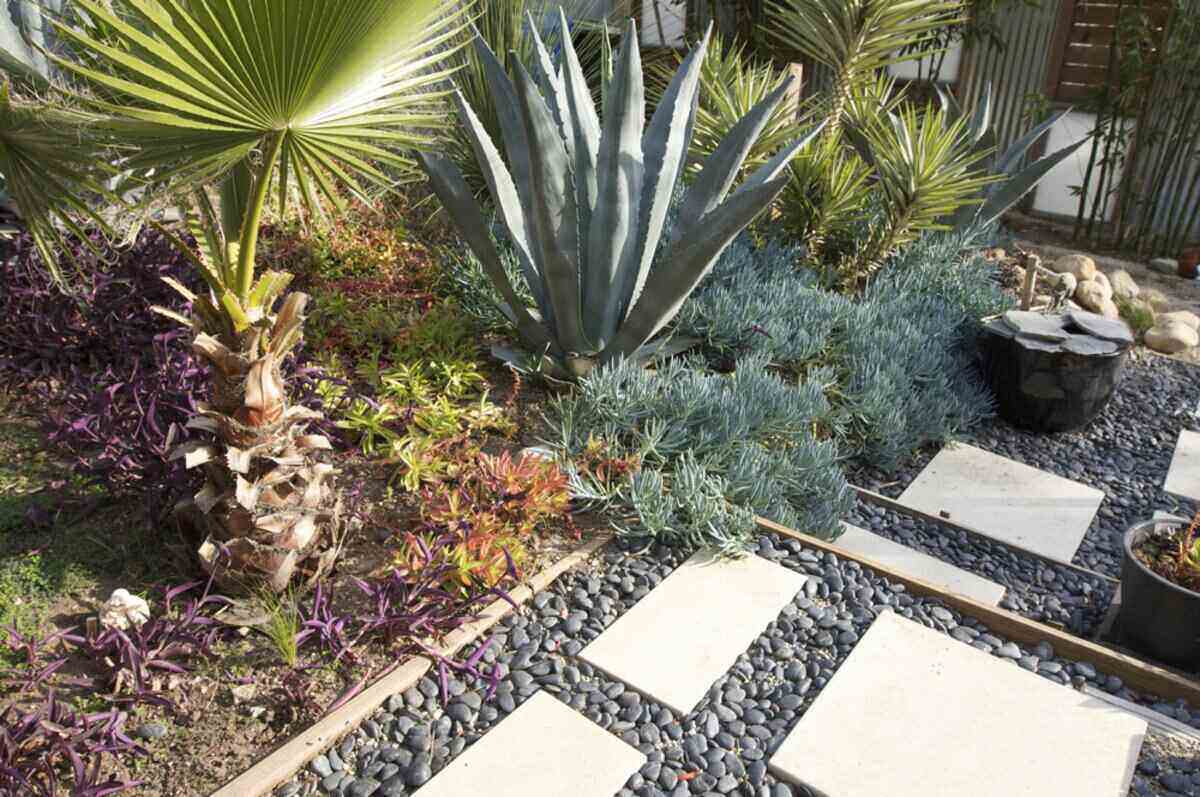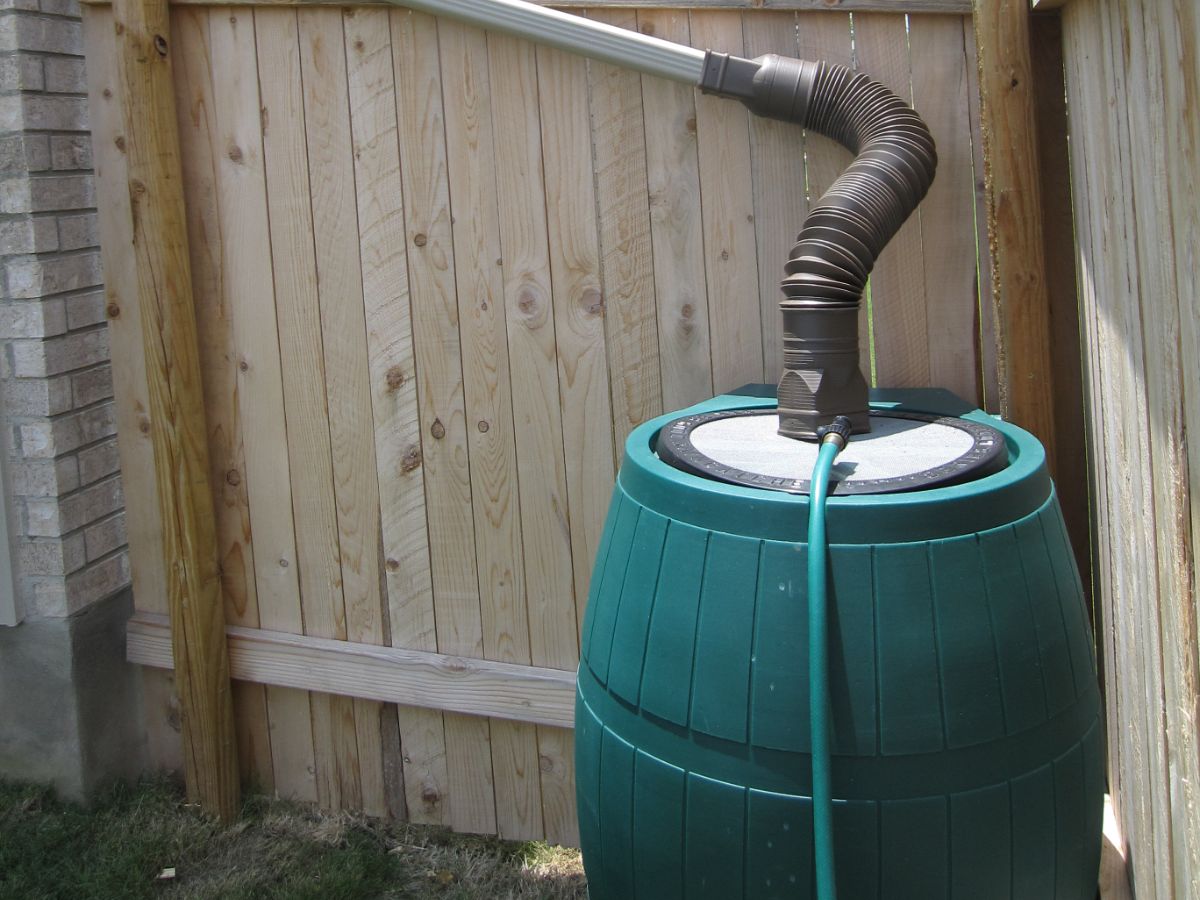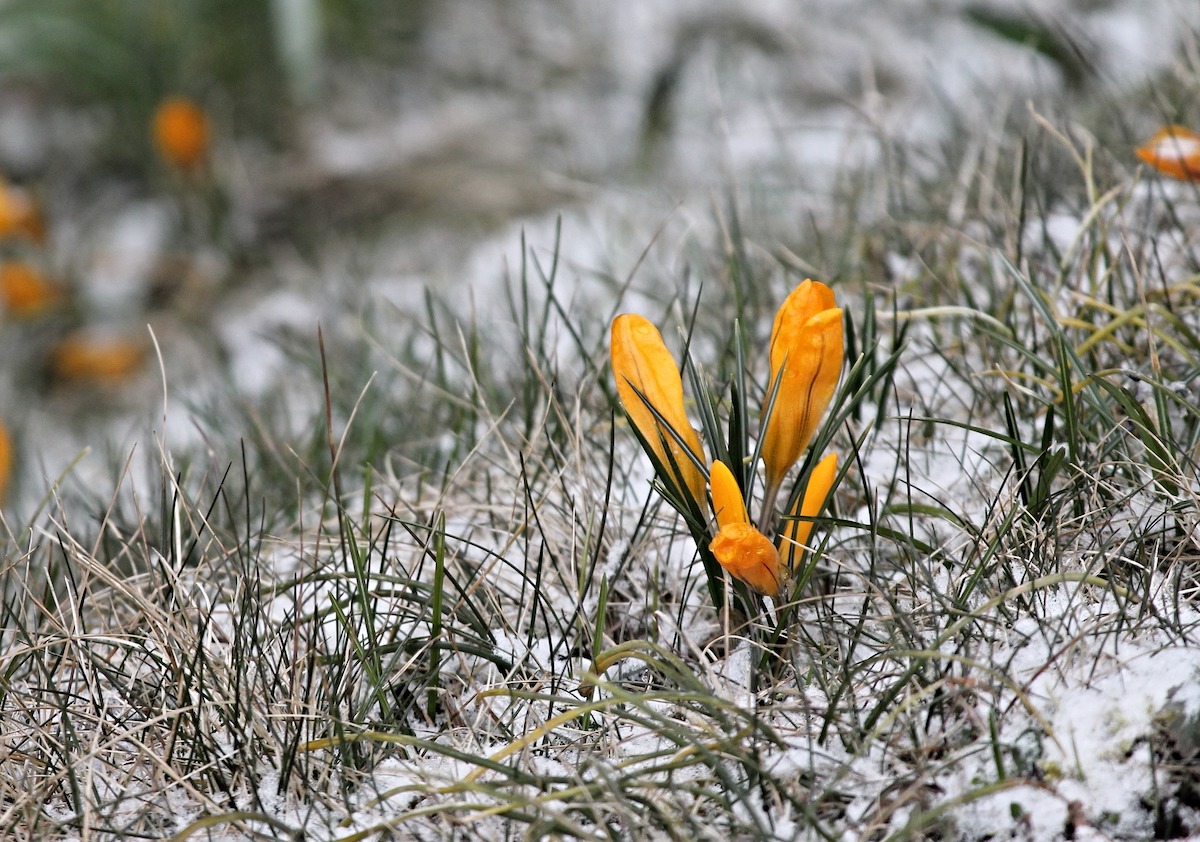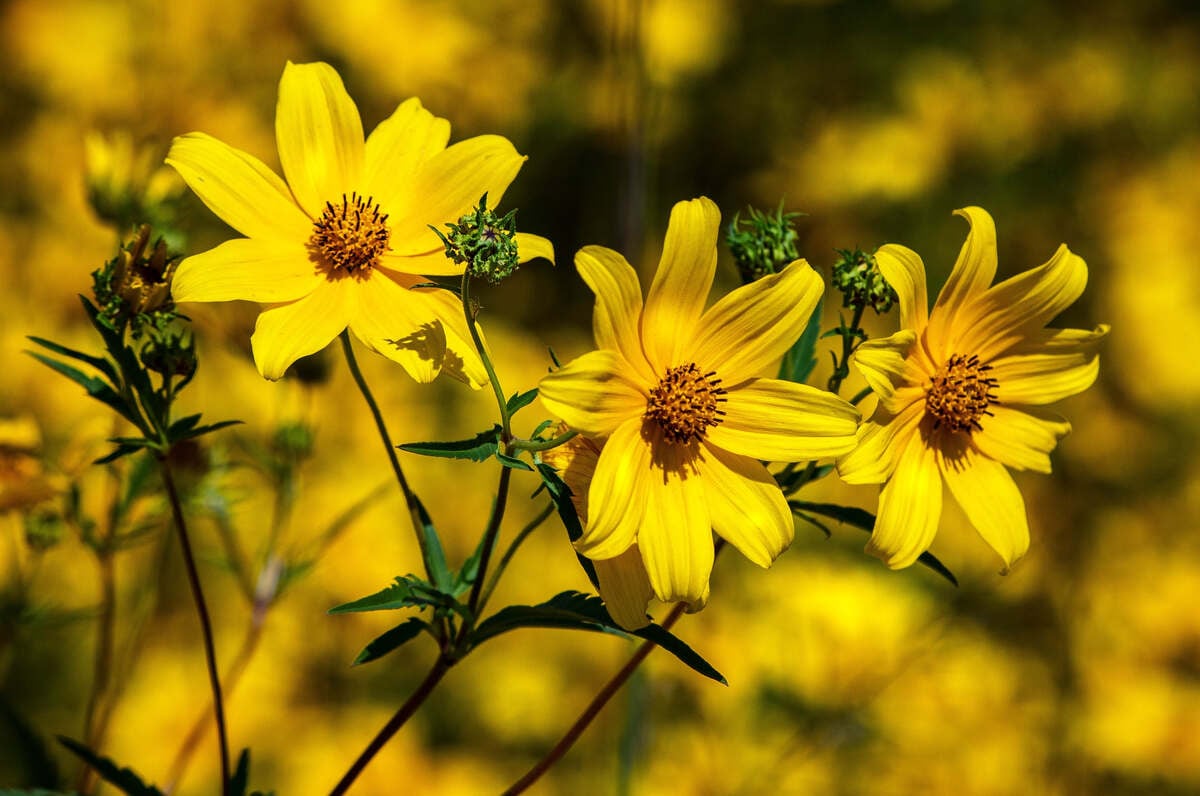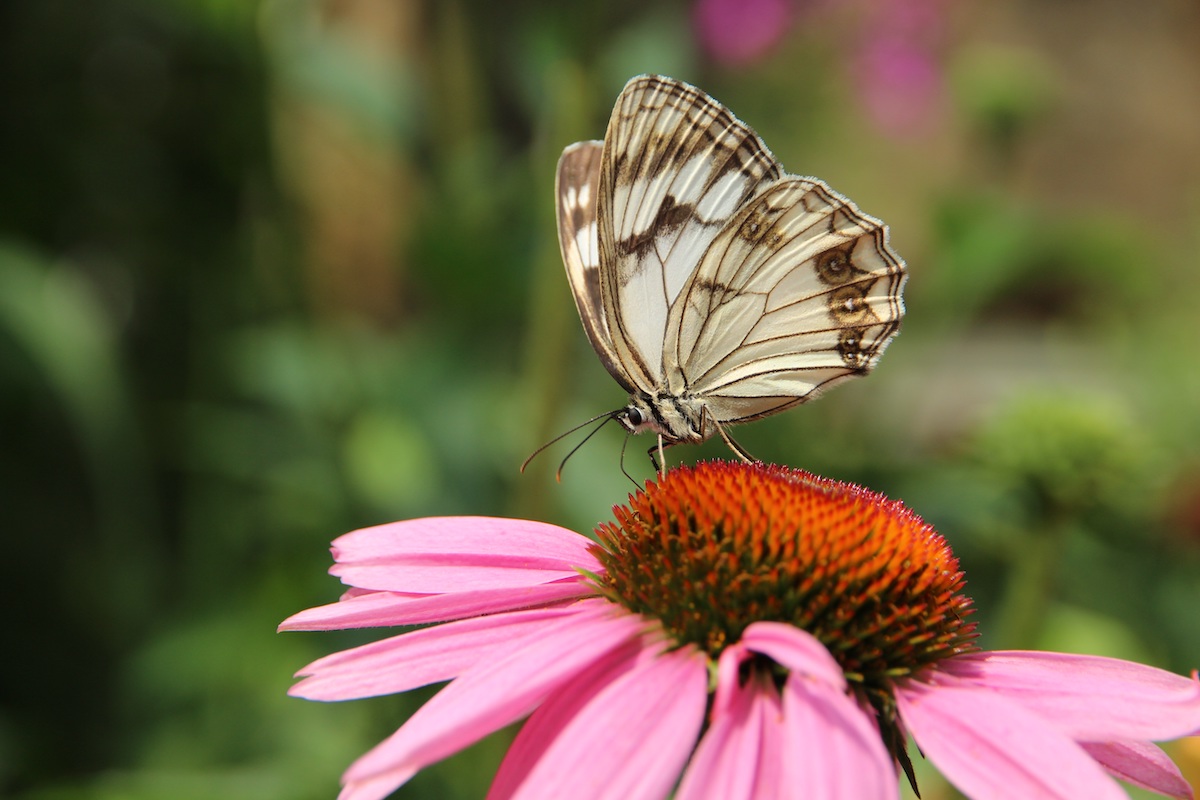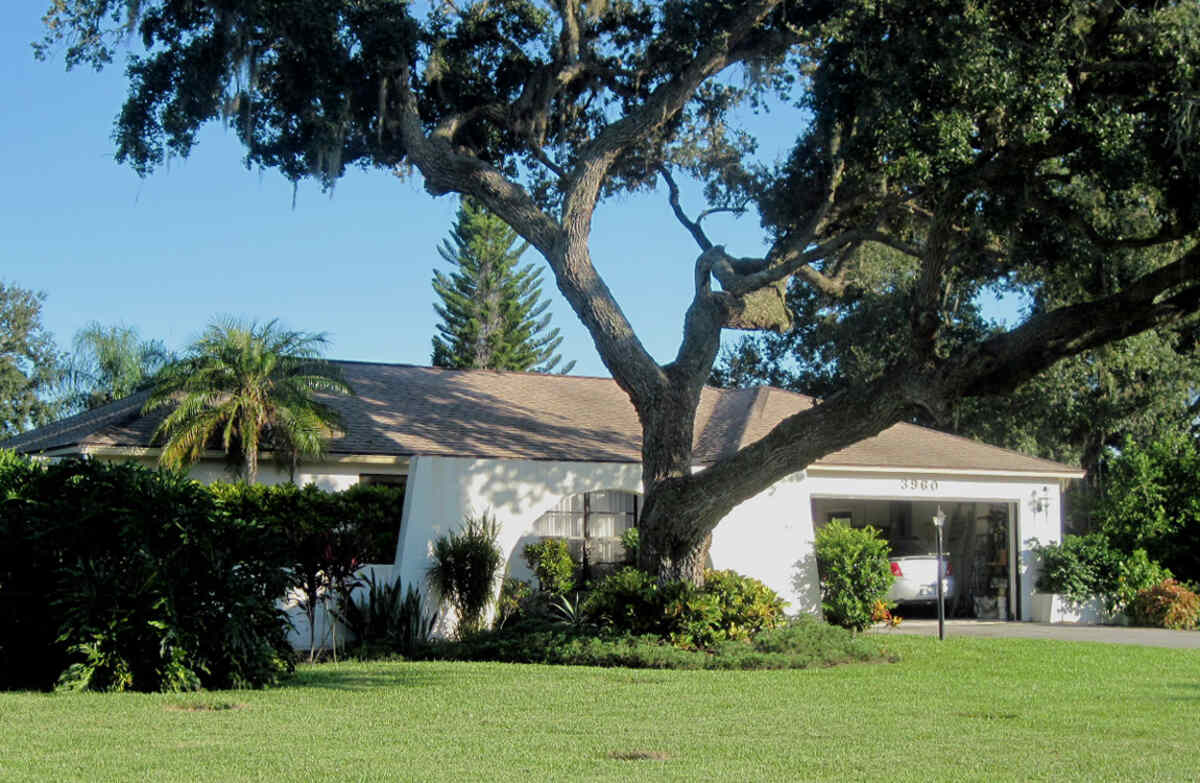
Whether you want to spend your time on Sarasota’s beautiful beaches, bicycling or birding in Myakka River State Park, or browsing in magnificent shops, you homeowners will need a low-care lawn that won’t take you away from your favorite activities. Here are 12 low-maintenance landscaping ideas for Sarasota, FL.
- 12 Low-Maintenance Landscaping Ideas for Sarasota, FL
- 1. Peter Piper Picks a Peck of Perennials
- 2. Going Native
- 3. Evergreens are not Just for the Holidays
- 4. Taking Cover with Ground Covers
- 5. Rain, Rain, Don’t Go Away
- 6. Keeping it Dry
- 7. Pot Stickers
- 8. Follow the Yellow Brick Road
- 9. Mulch Ado About, Well, Mulch
- 10. Rock On
- 11. Intravenous Drip
- 12. Turf It Out
- FAQ
- Which Choice is Best for Your Yard?
12 Low-Maintenance Landscaping Ideas for Sarasota, FL
1. Peter Piper Picks a Peck of Perennials
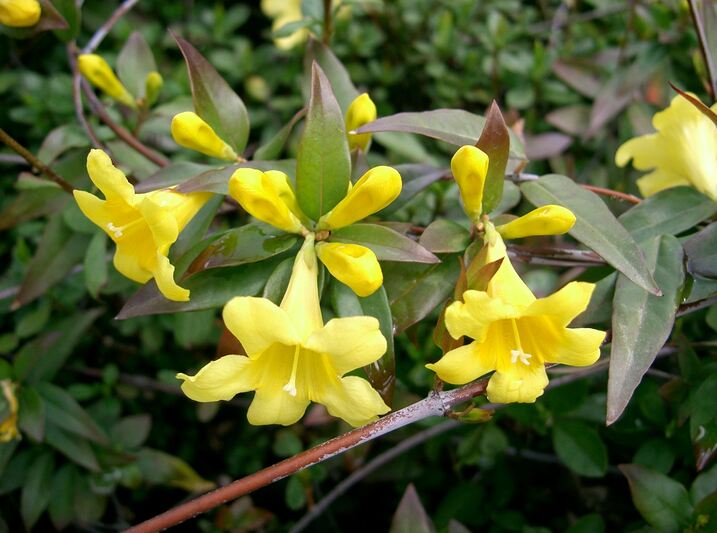
Peter Piper chooses wisely. Planting perennials means that he – and you – don’t have to fuss with annuals, only to have them peter out and die every year. You can choose from many perennials: flowers, ferns, vines, bushes, and trees. The bigger perennial you get, the more real estate your plant will fill, the less you’ll have to do overall.
Advantages of perennials:
- Help prevent erosion and improve soil
- Bloom annually without having to replant annually
- Come in many shapes and sizes (and flowering and nonflowering)
Examples of perennials for Sarasota:
- Flowering vine: Yellow or Carolina jessamine (Gelsemium sempervirens)
- Fern: Wood or Southern shield fern (Thelypteris kunthii)
- Tree: Live oak (Quercus virginiana)
2. Going Native
Plants in Sarasota must tolerate drought and hurricane storm surges and winds. Sarasota’s native plants will thrive in this challenging subtropical climate. You can save water, time, and money when you plant native plants such as trees, shrubs, and flowers for your garden.
Advantages of native plants:
- Adapted to the local climate
- Accustomed to Florida’s soil requirements
- Have immunity against the state’s pests and plant diseases
- Require less time and money for maintenance (e.g., watering)
- Creates wildlife habitat for native bees, butterflies, insects, birds, and other animals
Examples of native plants for Sarasota:
- Flower: Wand or slender goldenrod (Solidago stricta)
- Shrub: Saw palmetto (Serenoa repens)
- Palm tree: Cabbage palm (Sabal palmetto)
3. Evergreens are not Just for the Holidays
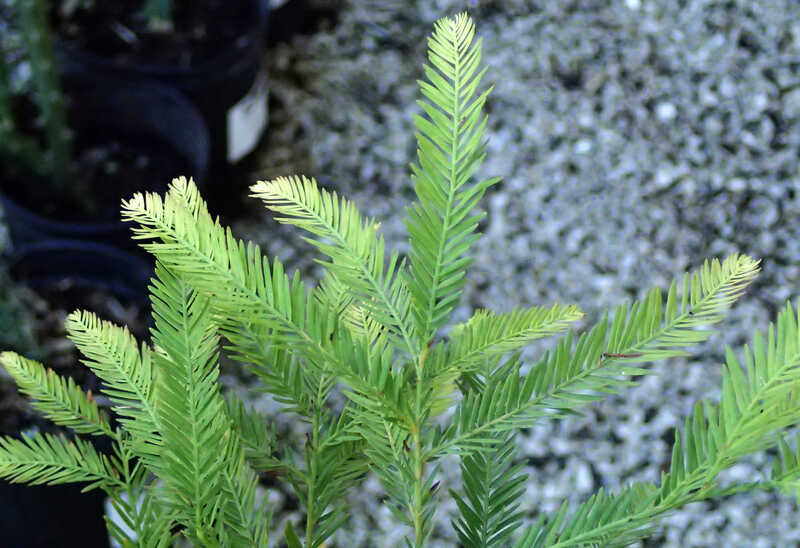
Plant evergreens throughout your landscape for year-round green. They don’t include just pine trees or bushes either. Evergreens are plants whose foliage remains green and functional throughout the year. This includes bamboos, conifers, hollies, and many others.
Advantages of evergreens:
- No leaves to rake
- Provide year-round curb appeal
- Come in a variety of sizes and shapes
Examples of evergreens for Sarasota:
- Italian cypress (Cupressus sempervirens)
- Carolina or sand holly (Ilex ambigua)
- Yew podocarpus (Podocarpus macrophyllus)
- Bald cypress (Taxodium distichum)
4. Taking Cover with Ground Covers
As “carpets of foliage that cloak and beautify our landscape ‘floors,’” ground covers, which typically grow to 1 foot, can be used in many ways: under plants in borders and beds, in wet or dry locations, along walks and paths, and in sun or shade. Ground covers are not made for walking on.
Advantages of ground covers:
- Especially useful in problem zones, such as on slopes (where they can help erosion control) and in narrow areas
- Can provide color for shady areas under trees or near buildings
- Reduce maintenance (e.g., mowing), which helps your schedule and the environment
Examples of ground covers for Sarasota:
- Lilyturf (Liriope species)
- Periwinkle (Vinca minor)
- Creeping phlox (Phlox subulata)
- Yellow archangel (Lamiastrum galeobdolon)
* Selecting Landscape Plants: Groundcovers
5. Rain, Rain, Don’t Go Away
Take advantage of those tropical Florida rains with a rain garden. Made up of a shallow depression, often at the bottom of a slope, these gardens remain wet only about 48 hours after a shower, so the plants need to be drought tolerant too.
Plant your rain garden design near downspouts, next to the driveway or sidewalks, or out in the back or front yard but at least 10 feet away from your house. You can plant native perennials, shrubs, and grasses in this garden.
Advantages of rain gardens:
- Can be placed any place in your yard where water tends to puddle
- Use water from nature to return water to nature and prevent stormwater runoff
- Help reduce erosion
- Can attract thirsty wildlife
- Strain impurities before the water drains into the Florida aquifer
Examples of plants for rain gardens in Sarasota:
- Swamp or rose mallow (Hibiscus moscheutos)
- Virginia-willow or sweetspire (Itea virginica)
- African iris (Dietes iridioides)
- Cinnamon fern (Osmundastrum cinnamomeum)
6. Keeping it Dry
To conserve water, try xeriscaping with slow-growing, drought-tolerant native plants. In fact, this landscaping approach can save you up to 60% on your water bill. In determining the best plants for xeriscaping, you can use cacti, succulents, groundcovers, grasses, and trees, while helping the Florida environment.
Advantages of xeriscaping: determining which are the best plant for xeriscaping
- Saves water (and your water bill) and protects the environment
- Low risk of pests and disease
- Drought resistant
- Slow-growers
- Easy to maintain
Examples of plants for xeriscaping in Sarasota:
- Sunshine mimosa or powderpuff (Mimosa strigillosa)
- Whale’s tongue agave (Agave ovatifolia)
- California sagebrush (Artemisia californica)
- Ice plant (Delosperma species)
7. Pot Stickers
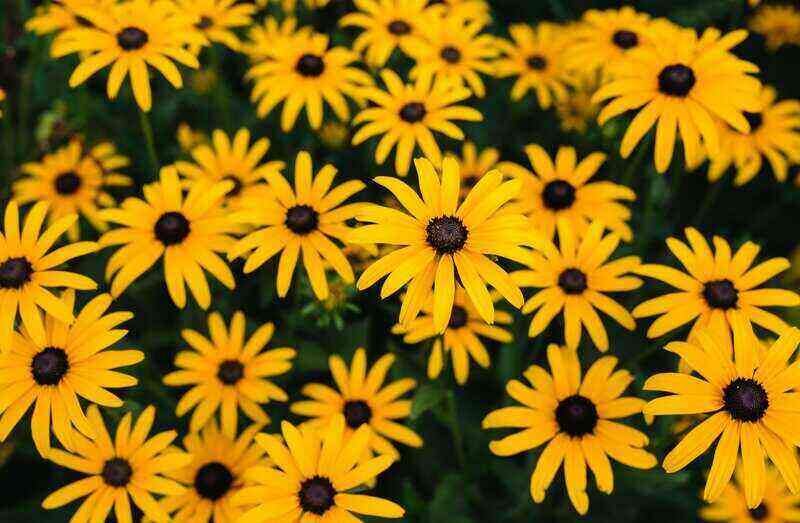
Photo Credit: Pixnio
Gardening in pots can be as fun as the containers of different sizes, colors, and shapes you find to house your plants. Containers can be placed on or above balconies, porches, and patios or grouped to make a statement. In your beautiful container garden, you can grow annuals and perennials, herbs, and even vegetables and fruits.
Advantages of container gardens:
- Easier to weed and water container plants
- Easier to keep plant predators (e.g., rabbits) away
- Can be as high or low maintenance as you wish
- Provide interest and color to surroundings
Examples of plants for Sarasota container gardens:
- Sea fennel (Crithmum maritimum)
- California fuchsia (Epilobium canum)
- Coastal prickly pear (Opuntia littoralis)
- Black-eyed Susan (Rudbeckia hirta)
8. Follow the Yellow Brick Road
Want a beautiful landscape feature that doesn’t require the everyday or weekly love you have to give your plants? Hardscaping is where it’s at. In hardscaping, human-made landscape structures (e.g., patios, decks) can be built into your yard.
Hardscaping not only can give you an outdoor space for living (e.g., outdoor kitchen or dining room), but can also improve your home value. You can get 83% return from building a deck, for example, not to mention all that outdoor living you’ll do.
Advantages of hardscaping:
- Increases your property’s value
- Requires virtually no maintenance (maybe a sweeping once in a while)
- Includes features that can be the focus of your yard
- Includes potential living space for your family
Examples of hardscaping:
- Patios
- Pavers
- Decks
- Walkways
- Fences
- Retaining walls
- Gazebos and pergolas
- Water features
9. Mulch Ado About, Well, Mulch
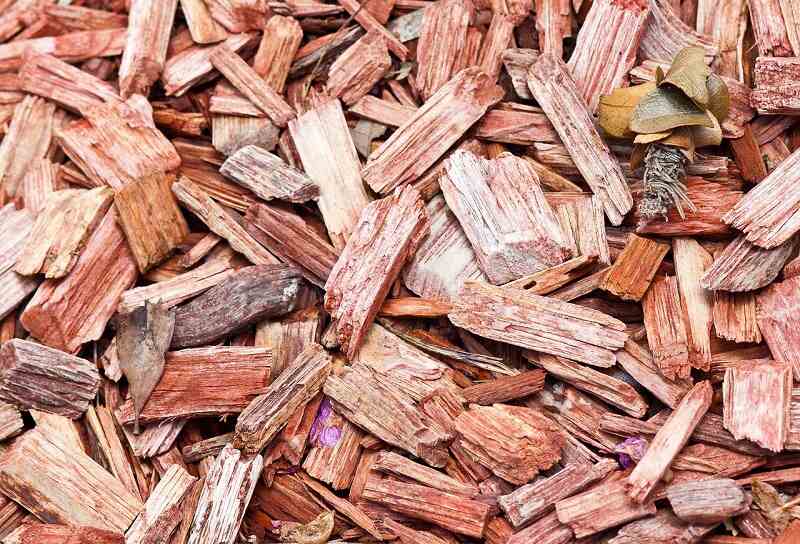
Mulch is a protective covering spread around plants to improve your lawn and help reduce weeds. Although you’ll need to replace mulch occasionally, all mulches can reduce the area that you will need to mow in your yard, which is the goal here.
Advantages of mulch gardening:
- Reduces the area that needs mowing and weeding
- Makes your yard look tidier
- Reduces evaporation of water and controls weeds
- Prevents erosion and enriches the soil
Types of mulches:
- Organic mulches: wood chips, shredded bark, straw or hay, tree leaves
- Inorganic mulches: gravel, pebbles, and river rocks; reflective metallic mulch; rubber mulch
10. Rock On
Rock gardens include boulders, rocks, and stones of various shapes, sizes, and colors, but also plants, water features, and decorative features. The different types and colors of rocks provide texture and interest. You can plant cacti, succulents, shrubs, and flowering plants among the rocks. You can even grow a rock garden in a container!
Advantages of rock gardens:
- Require little maintenance (e.g., watering)
- Drought tolerant
- Provides something different for your yard
- Can be calming
Examples of types of rock gardens:
- Zen garden
- Japanese rock garden
- Xeriscaping
- Garden with water features such as ponds and waterfalls
11. Intravenous Drip
If you’re tired of the daily routine of watering your plants in the hot Florida sun, a drip irrigation system may just be the solution. Drip irrigation is just that: a system that drips water onto plants. Neah, huh?
You’ll need to occasionally ensure that the drip irrigation filters and other equipment are not clogged, but that’s less work than your daily watering sessions. In addition, the cost of drip irrigation remains fairly inexpensive, depending on the type you purchase. It can even come with a timer so that you don’t have to worry about turning it off and on.
Advantages of irrigation systems:
- Saves labor
- Conserves water
- Reduces erosion
- Reduces leaf diseases
Types of irrigation systems:
- Traditional irrigation
- Micro-misters
- Bubblers
- Soaker hoses
- Subsurface drip irrigation (for lawns)
12. Turf It Out
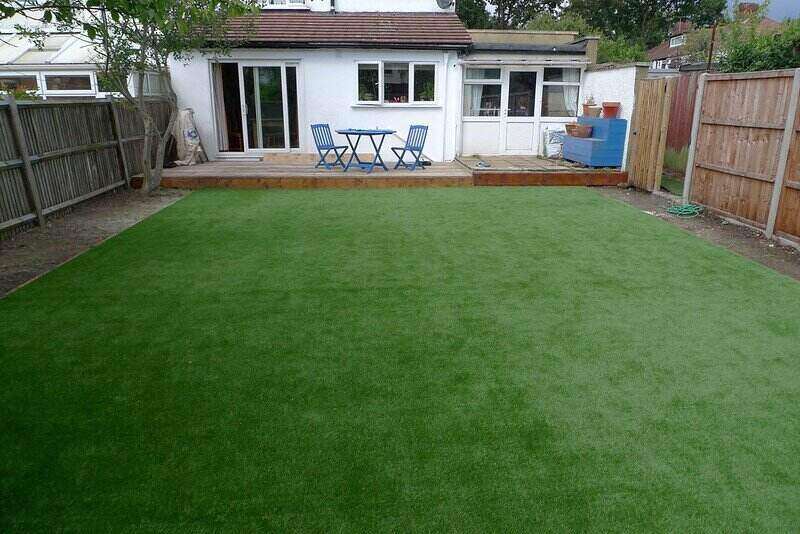
Photo credit: Perfect Grass / Flickr / CC BY 2.0
You want to avoid all basic lawn care and instead paddle your kayak in Sarasota Bay. Your solution might be artificial grass. There’s some work and cost in installing it, but after that, there’s no dragging that sprinkler around to keep your grass green, just the relaxing waters of the bay.
Advantages of artificial turf:
- Very low maintenance (no watering or fertilizing)
- Stays green year-round and has no bare spots
- Safe for pets and children
- Resistant to drought
Things to research about artificial turf:
- Composition: polyethylene, polypropylene, or nylon
- Number of blades per square inch
- How high the blades are
- Weight of the backing
- Color of the “grass”
PS: If you still want living grass, check out the best grass types for Sarasota.
FAQ
Plants in Sarasota can survive temperatures as low as 25-30 degrees Fahrenheit in USDA Hardiness Zone 9b. By selecting plants suited to this zone, you can improve the chances that your plants will thrive. And you’d be helping native wildlife with their native food and shelter.
Flowers native to Florida keep maintenance and costs (e.g., watering, fertilizing) low. Some of the best native flowers you can grow include:
● Violets (Viola species): White, purple, or yellow flowers that can grow in partial shade or full sun
● Passionflower (Passifloraincarnata): Purple flowers with fringe that grow on a vine in full sun and partial shade
● Coral honeysuckle (Lonicera sempervirens): Bright red tubular flowers that attract butterflies and songbirds
Excellent choices for your Florida landscape, perennial native plants require little maintenance. And native shrubs can be beautiful. A few of the best native shrubs for Sarasota include:
● Southern wax myrtle or bayberry (Morella cerifera): White and green blooms in spring
● Florida privet or Florida swamp privet (Forestiera segregata): Yellowish-green blooms in early spring
● Buttonsage (Lantana involucrate): Year-round white to lavender flowers in clusters, as well as purple fruit
Which Choice is Best for Your Yard?
You must carefully consider the characteristics you would like your yard to have – height, texture, color – when making your selection. You also need to know the growing conditions of your soil, sunny or shady zones, and dry or moist areas. Most of all, you’ll need to figure out how much time and effort to spend on your landscaping projects.
You can get overwhelmed with the choices, especially when considering a low-maintenance yard. Call a professional Sarasota landscaping company if you want help in planning or installing your yard’s landscaping design or even if you want help in maintaining your current yard. It’s all about relaxing in Florida’s abundant sunshine.
Main Image Credit: Roger W / Flickr / CC BY-SA 2.0
